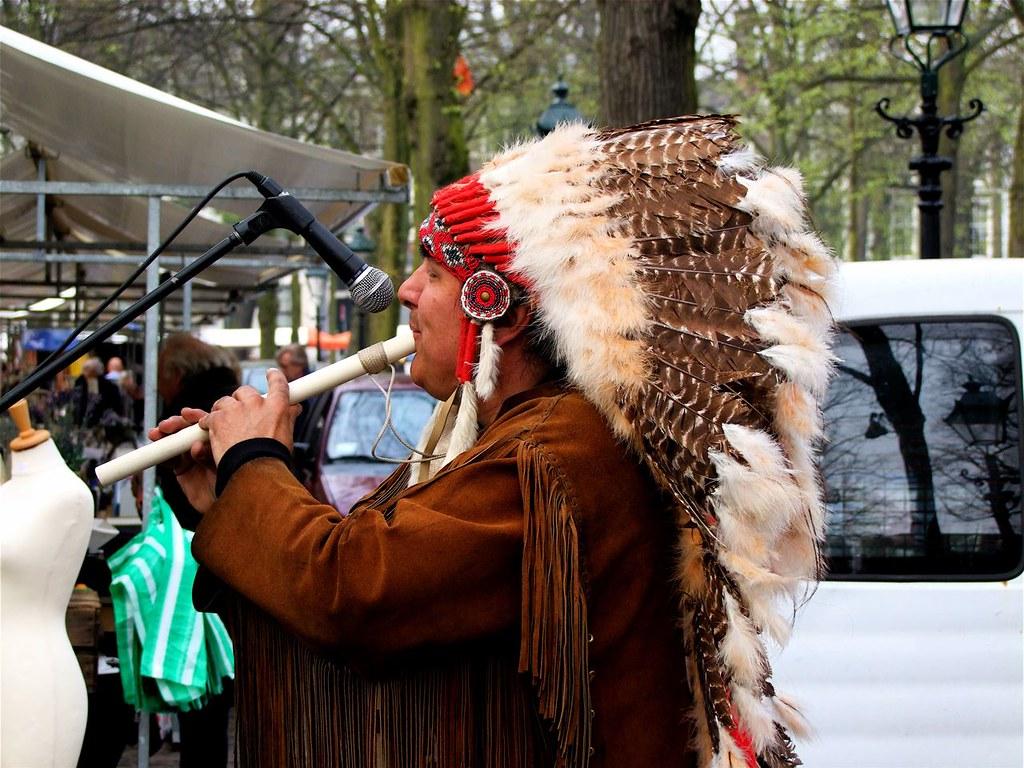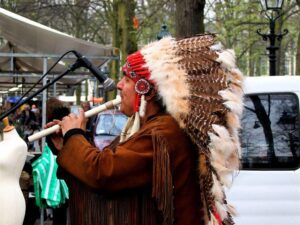Music is an integral part of most cultures, and this is especially true of Native Americans. The function of music isn’t simply about entertainment; in the Native culture, music is also used to share stories, evoke emotion, bring about dance and worship, and correlate with ceremony, tradition, and spirituality. From early history to the present, Indigenous people have incorporated song and music into their daily lives. It has been used as a powerful tool to communicate and inspire.
How do historical music traditions influence today’s Native culture? And what does modern-day Native American music look like?
Read on for a quick glimpse into the evolution of Native American music.
Early Native American Music
We know quite a bit about how early Native civilizations incorporated music into their lives through the study of archaeology and anthropology. With the discoveries made from the Inca and Aztec civilizations, we can understand what music meant to their cultures and how they represented its importance. For example, it is known that the Inca celebrated using a range of historical songs. In addition, the Aztecs used a variety of instruments with carved symbols showing how, when, and where they played.
An article from Britannica states: “Archaeology reveals extensive information about the history of musical instruments, and the study of ancient sculpture, paintings, and other visual materials suggests something about instrumental performance techniques and ceremonial contexts.”
Once colonization began, European explorers and settlers described their observations of Native music––many disliking what they heard; although knowing America’s unfortunate early history, this may not be surprising.
Of course, like in many ways, Europeans influenced Native American culture––this time regarding music.
Between the 1500s and 1700s, Europeans encouraged Native Americans to adopt their musical genres, which included using their instruments, learning how to create Euro-inspired instruments, and learning to read, compose, and perform from those genres.
The introduction to new musical instruments, such as the drum, occurred when African slaves came to America.
During the 1800s, religion, especially Christianity, played a part in the evolution of Native music. More specifically, hymnals were created with a piano, fiddle, and organ. An example of this contribution is a Cherokee hymnal published in 1821, using the syllabary completed by Sequoyah.
The first several hundred years of America had a major influence on Native music. While other cultural and religious factors play a role in some of the music we see and hear today, Native Americans have also kept their original traditions alive.
Fast Forward to Modern Day
“Native America is a culture and a people deeply stemmed and intertwined in music since the onset of their existence,” according to the National Association of Native American Music webpage. “We have a song for every aspect of life; ceremonials, sports, and dance to courting, birth, and death. We have survived incredible oppression and challenges. Today, we celebrate our survival through music and dance.”
Despite the various influences on traditional Native music, Indigenous people have made it what it is today.
Native musicians today use both ancient and modern melodic and lyrical techniques to create amazing works of art. Whether the purpose is for a pow wow, ceremony, concert, spiritual event, or the radio or streaming network, Native artists know how to capture history, emotion, and celebration all in one song.
Native Musicians to Follow Right Now
Here are just a few popular Native artists to follow into 2022.
1-OPLIAM
Liam McDonald, or OPLIAM, is a multi-genre artist out of Chicago. His music blends hip-hop, rock and roll, and reggae to create an exciting vibe. Not only is he a musician, but he is working on publishing a children’s nonfiction series about the Native history of the United States.
Waln, who is Sicangu Lakota and currently also out of Chicago, is an award-winning hip-hop artist. He has won three Native American Music Awards and multiple grants for supporting other Native musicians.
Zaragoza has a beautiful mixture of cultures in her blood: Japanese, American, Mexican, and Indigenous heritage. Her genres include acoustic, pop, and Americana, and her goal is to inspire other women of color who want to achieve big dreams.
Show your support of Indigenous music by following each of these fabulous artists on social media.
The Future of Native Music
While Native Americans are still underrepresented in the media, which includes the world of music, Indigenous peoples are making progress and gaining ground.
Native artists are flourishing on social media and YouTube, are promoting and hosting concerts and events, are getting their music featured in movies and television shows, and are available on different streaming platforms, such as Spotify, Apple Music, YouTube Music, and Tidal.
Native American music is also ubiquitous on Native streaming radio stations so listeners can hear what they want when they want.
By listening to Indigenous artists, you’ll be inspired by a mixture of historical and modern-day culture, but you’ll also support current and future generations of creative influencers.
Featured image credit: “Native American music” by Roel Wijnants










